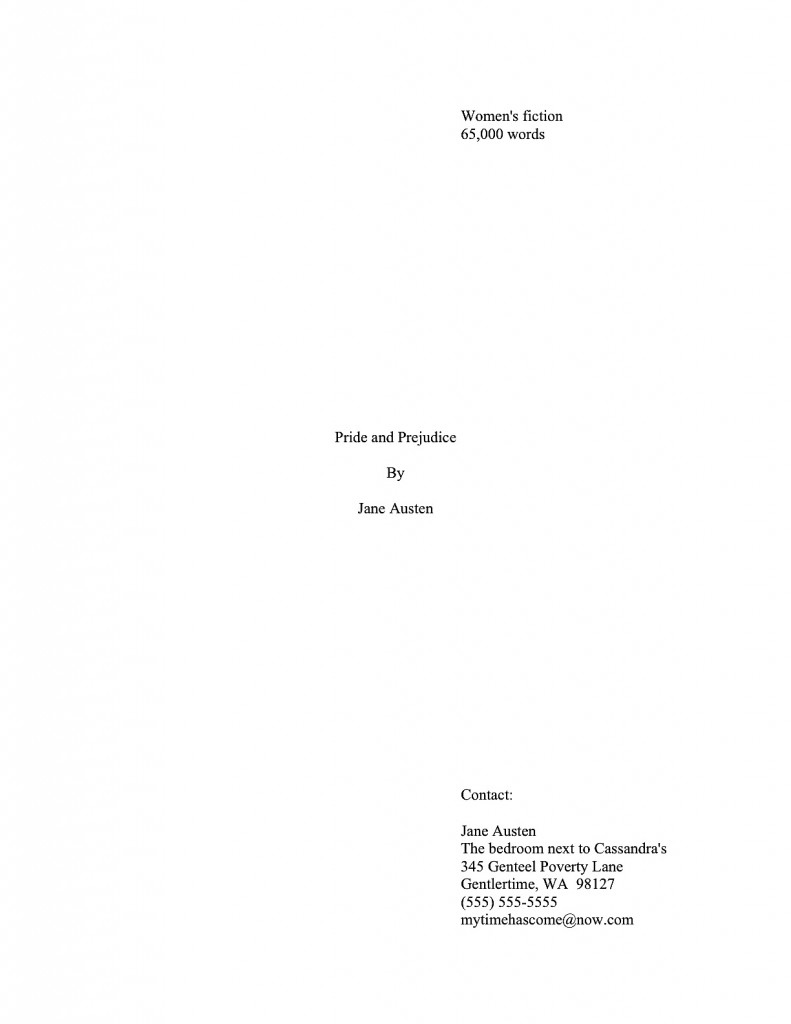I’m posting later than I intended this evening, campers — a trifle irritating, as I have a delightful guest post that I’d like to toss up bright and early tomorrow morning. I’m committed to answering any and all questions from readers, though, even if those questions crop up in posts from five years ago. (Yes, my blogging program alerts me.) It’s fine to leave questions on older posts, but please, everyone, try to match the post’s subject matter with the question you are asking. That way, readers with similar concerns are more likely to find and benefit from both question and answer.
If you can’t find something close to your topic on the exhaustive archive list conveniently located at the lower right-hand corner of this page, I’d like to ask you to do two things. First, leave your question in the comments section of my most recent post (again, to maximize its usefulness to other readers), and second, let me know that you couldn’t find an appropriate category on the archive list. I’m always eager to make that list panic-proof, so category suggestions are always welcome.
What extended my question-answering time today was a comment in the latter category: left on yesterday’s post, rather than in the archives. It was time-consuming not due to the complexity or originality of the comment, but because it contained a simple statement that I have heard quite a bit over the years: a complaint that my posts deal with writing and marketing issues of concern to writers in too much detail.
What rendered this particular complaint difficult to answer was not that the commenter was evidently irked that I had spent so many paragraphs on what was to him a fairly straightforward issue: whether to include a SASE in a query or submission packet. (He felt that the entire question could have been resolved in just a few words: you should.) But that was not the crux of yesterday’s post; it dealt with specifics about what kind of SASE to use, why, and when.
The commenter was not aware of that, though, because — and he was honest enough to tell me this point-blank — he hadn’t bothered to read the entire post before telling me that it was much too long for its subject matter. He concluded, therefore, that the only reason I could possibly want to discuss something as mundane as the logic about the SASE for more than a few paragraphs was that I liked the sound of my fingers hitting the keyboard.
Sigh.
I’m not going to waste everyone’s time by unpacking that logic. Nor am I going to bother to debate whether it’s worthwhile to go over the reasoning behind the sometimes perplexing practices of the publishing industry; that’s what I do here. I assume — correctly, I think — that on days when I post at length on topics that don’t interest any given reader, the members of the Author! Author! community are intelligent enough to turn their attention elsewhere for the nonce.
It has been a while since I explained why I explain things at such length, though, so allow me to devote the first few minutes of our time together to clarifying why I believe that in an online world stuffed to the gills with one-size-fits-all advice source purporting to tell aspiring writers precisely what to do in articles of 250 words or less, Author! Author! fills an important niche. My apologies to those of you who have heard this before, but true to form, I have a brand-new illustrative anecdote this time around.
I’m perfectly aware that there are plenty of aspiring writers out there in a hurry to find out basic information about how to query, submit, revise, format, etc.; that’s why I have structured the aforementioned archive list to be as specific as possible. Many of the categories are paraphrases of readers’ questions, in fact, so that writers with similar questions might find the answers relatively quickly. (Sound familiar?) Because I have been blogging on writing, querying, and submitting for over six years now, it’s probably not astonishing that I tend to revisit the more important topics from time to time.
Today’s, for instance. Those of you who have been querying and submitting for a while probably already know how to ship requested materials to agents. Indeed, you might have learned about it here; because it is vital, I revisit the topic at least once a year. But for some readers, it will be brand-new information. For other readers, particularly those who will be first encountering this post while searching for answers about shipping in the archives, it will be a supplement to (or perhaps a contradiction of) what they have learned from other sources, up to and including those super-short lists of what aspiring writers should do.
I believe I owe it to both those sets of readers to deal with the issues at hand as thoroughly as I would the first time I ever blogged about it, in sufficient detail and with enough illustrative examples so that a writer brand-new to the biz will come away from the post not only understanding what to do, but why. As I say early and often, I don’t believe any writer should follow a rule without knowing why adhering to it is a good idea — and what can happen if he eschews it.
There, in the proverbial nutshell, is my philosophy of blogging about writing. I’m here to explain the hows and whys behind the rules, so good writers can follow them better, increasing their chances of getting published. And when my clever and insightful readership presents me with intriguing follow-up questions, I squirrel them away until the next time I deal with the topic, to improve my treatment of it.
So are my posts long and detailed? Darned right.
I can see how my penchant for thoroughness might be a touch irritating to those seeking quick answers, but hey, there’s no shortage of those on the Internet. Have at it, and the best of luck searching. Frankly, I would much rather over-explain the occasional practicality here than to have even one of my readers make an avoidable gaffe.
Just in case anyone isn’t sure why (see what I just did there?), let me share the story of one of my favorite cookbook authors. Let’s call her Sheila. I’m not going to use her real name: this story was so infamous in publishing circles that for several decades, her name was synonymous with avoidable error. She’s a great cooking author, though, so I don’t want to revive the association.
Sheila’s story is worth knowing for any would-be author. Many years ago, back in the heyday of the cookbooks by amateur chefs like Julia Child, Sheila wrote a terrific debut cookbook: intriguing recipes well described, with amusing and enlightening anecdotes joining them. Her agent loved it; her editor loved it; her godmother, a well-known cooking writer herself, loved it enough to give it a spectacular back-jacket blurb.
Sheila was, in short, expected to be the next great cookbook author — so why do I think those of you fond of your kitchens may not be aware of her work? Quite simply, her cookbook contained a faux pas that got her publisher sued: a reader following her directions to the letter blew up an oven.
How is it possible that not only Sheila, but her agent, editor, godmother, every single reviewer, and the overwhelming majority of her readership missed that the instruction in question was so dangerous? Sheila had written the recipe while laboring under the assumption that anyone remotely interested in baking a pie might conceivably have read a cookbook before. Her target audience might be relied upon to know the terminology, right?
Tell that to the hapless reader who took add one can of sweetened condensed milk too literally, setting the unopened can in the middle of the pie pan, presuming, wrongly, that its role was to weigh down the crust While a more experienced cook might perhaps have wondered why Sheila would have gone out of her way to specify what needed to be inside a can used for this purpose, the eager first-time cookbook reader did not think to question the recipe until her stove went boom.
And so did Sheila’s career as a cookbook author, at least for many years. She became famous as a cautionary tale to those who would write about cookery: when producing a to-do list, don’t leave room for misinterpretation. The stakes are just too high to take a chance.
They are here, too: at Author! Author!, I routinely talk about how to present and modify your writing in order to render it more attractive to agents and editors. What could possibly be more important to get right than that? And why on earth should you follow a rule I set out if I don’t prove to you why it’s in your book’s best interest to adhere to it?
Allow me to reiterate, then: I don’t expect you to cling to my advice just because I say something will work. If you don’t understand what I am suggesting you should do — or what an agent, editor, or submission guidelines have asked you to do — by all means, ask. Some of my best posts have been sparked by readers’ questions; heck, so have many of my series. Even if it’s just a quick question on a past post, I would much, much rather spend some of my blogging time clarifying matters for my readers than to see even one of you commit the querying or submission equivalent of advising your readers to blow up their ovens.
So darned right, these posts are detailed; long may they be. I’m here to help good writers succeed.
Case in point: for the last couple of posts, I have been talking — yes, at length — about how to put together query packets, as well as their more illustrious cousins, submission packets. Even in these mercurial days of e-mailed queries, electronic submission, and Hubble telescope photographs of far-flung celestial bodies (I’m a sucker for a nice snapshot of Jupiter), most agencies still prefer paper submissions. Heck, many still insist on mailed queries as well.
Why? Well, fear of computer viruses, for one thing. But even more important: it’s so much easier for an electronic submission to get lost.
Hey, when Millicent the agency screener gets on an online submission reading roll, she hits the DELETE key more than any other. Not too surprising that her finger would slip occasionally, is it? Force of habit, really; the lady rejects a heck of a lot of manuscripts between lunch and checking out for the day.
For reasons both of tradition and prudence, then, a lot of writers are going to be in the market for shipping containers for their manuscripts in the months to come. Yet as insightful long-time reader Jen wrote in to ask some time back:
Sending off all those pages with nothing to protect them but the slim embrace of a USPS envelope seems to leave them too exposed. Where does one purchase a manuscript box?
An excellent question, Jen: many, many aspiring writers worry that a simple Manila envelope, or even the heavier-duty Priority Mail envelope favored by the US Postal Service, will not preserve their precious pages in pristine condition. Especially, as is all too common, if those pages are crammed into an envelope or container too small to hold them comfortably, or that smashes the SASE into them so hard that it leaves an indelible imprint in the paper.
Do I sense some of you scratching their heads? “But Anne,” head-scratchers everywhere ask, and bless their hearts for doing so, “once a submission is tucked into an envelope and mailed, it is completely out of the writer’s control. Surely, the Millicents who inhabit agencies, as well as the Maurys who screen submissions at publishing houses and their Aunt Mehitabels who judge contest entries, are fully aware that pages that arrive bent were probably mangled in transit, not by the writer who sent them. They can’t blame me for mashed mail, can they?”
Well, yes and no, itchy ones. Yes, pretty much everyone who has ever received a mauled letter is cognizant of the fact that envelopes do occasionally get caught in sorting machines, if not actually mauled by playful bands of orangutans with a penchant for playing volleyball with objects with pointy corners. Mail gets tossed around a fair amount in transit. So even a beautifully put-together submission packet may arrive a tad crumpled.
Do most professional readers cut the submitter slack for this? Sometimes, but if Millicent’s just burned her lip on that latté that she never seems to remember to let cool, it’s not going to take much for the next submission she opens to annoy her. I don’t know Aunt Mehitabel personally, but I have heard contest judges over the years complain vociferously to one another about the state in which entries have arrived on their reading desks. Indeed, I have been one of those complaining judges.
All of which is to say: appearances count. You should make an effort to get your submission to its intended recipient in as neat a state as possible.
How does one go about insuring that? The most straightforward way, as Jen suggests, is to ship it in a box designed for the purpose. Something, perhaps, along the lines of this:
Just kidding; we’re not looking for a medieval Bible box here. What most professional writers like to use looks a little something like this:
This is the modern manuscript box: sturdy white or brown cardboard with a lid that attached along one long side. Usually, a manuscript box will hold from 250 to 750 pages of text comfortably, without allowing the pages to slide from side to side.
While manuscript boxes are indeed very nice, they aren’t necessary for submission; the attached lid, while undoubtedly aesthetically pleasing, is not required, or even much appreciated at the agency end. Manuscripts are taken out of the boxes for perusal, anyway, so why fret about how the boxes that send them open?
In practice, any clean, previously-unused box large enough to hold all of the requested materials without crumpling them will work to mail a submission. Don’t waste your valuable energies badgering the manager of your local office supply emporium for an official manuscript box; you may only confuse him. Anything close to the right size will do, but err on the large side: it’s easier to pad a manuscript around the edges to fit in a big box than to bend it to squeeze into a small one.
Some of you are resisting the notion of using just any old box, aren’t you, rather than one specially constructed for the purpose? I’m not entirely surprised. I hear all the time from writers stressing out about what kind of box to use — over and above clean, sturdy, and appropriately-sized, that is — and not without good reason. In the old days — say, 30+ years ago — the author was expected to provide a box, and a rather nice one, then wrap it in plain brown paper for shipping.
These old boxes are beautiful, if you can still find one: dignified black cardboard, held together by shining brass brads. They were darned near immortal, too; I have several that members of my family routinely sent back and forth to their agents in the 1950s, back when sending a manuscript across the country entailed sending it on a multi-week trek. To this day, not a sheet of paper inside is wrinkled.
Ah, tradition. For sending a manuscript, though, there’s no need to pack it in anything so fancy — or indeed, anything extravagant. No agent is going to look down upon your submission because it arrives in an inexpensive box.
In fact, if you can get the requested materials there in one piece box-free — say, if it is an excerpt short enough to fit into a Manila folder or Priority Mail cardboard envelope without wrinkling — go ahead. This almost always will work for a partial or the briefer stack of materials acceptable to send in a query packet.
Do bear in mind, though, that for either a query or submission packet, you want to have your pages arrive looking fresh and unbent. Double-check that your manuscript will fit comfortably in its container in such a way that the pages are unlikely to wrinkle, crease, or — perish the thought! — tear.
Remember the Sanitary Author’s advice about printing all of your query and submission packet materials on bright white 20 lb. paper or better? This is part of the reason why. It honestly is penny-wise and pound-foolish to use cheap paper for submissions; not only does heavier paper ship better, but it’s less likely to wilt over the course of the multiple readings a successful submission will often see at an agency.
Good rule of thumb: if you can look at a stack of printed pages and see even a vague outline of page 2 while you’re examining page 1, your paper isn’t heavy enough.
Look for a box with the right footprint to ship a manuscript without too much internal shifting. To keep the manuscript from sliding around and getting crumpled, insert wads of bubble wrap or handfuls of peanuts around it, not wadded-up paper.
Yes, the latter is more environmentally-friendly, but we’re talking about presentation here. Avoid the temptation to use newspaper, too; newsprint stains.
Most office supply stores carry perfectly serviceable white boxes — Office Depot, for instance, stocks a serviceable recycled cardboard variety — but if you live in the greater Seattle area, funky plastic toy store Archie McPhee’s, of all places, routinely carries fabulous red and blue boxes exactly the right size for a 450-page manuscript WITH adorable little black plastic handles for about a buck each. My agent gets a kick out of ‘em. Fringe benefit: while you’re picking one up, you can also snag a bobble-head Edgar Allan Poe doll that bears an uncomfortably close resemblance to Robert Goulet:
If that’s not one-stop shopping, I should like to know what is.
Your local post office will probably stock manuscript-sized boxes as well, as does USPS online. Post offices often conceal some surprisingly inexpensive options behind those counters, so it is worth inquiring if you don’t see what you need on display.
Do be warned, though, that the USPS’ 8 1/2” x 11” boxes only LOOK as though they will fit a manuscript comfortably without bunching the pages. The actual footprint of the bottom of the box is the size of a piece of paper, so there is no wiggle room to, say, insert a stack of paper without wrinkling it.
Trust me, that’s not something you want to find out after you’ve already printed out your submission. If you’re in doubt about the internal size of a flattened-out box (as they tend to be at the post office), fold it into box shape and try placing a standard sheet of paper flat on the bottom. If it doesn’t lie completely flat, choose a larger box.
Yes, yes, I know: the USPS is purportedly the best postal service in the world, a boon to humanity, and one of the least expensive to boot. Their gallant carriers have been known to pursue their appointed rounds despite the proverbial sleet, hail, dark of night, and mean dogs. But when faced with an only apparently manuscript-ready box on a last-minute deadline, the thought must occur to even the most flag-proud: do the postal services of other countries confound their citizens in this way?
What do they expect anyone to put in an 8 1/2” x 11” box OTHER than a manuscript? A beach ball? A pony? A small automobile?
All that being said, far and away the most economical box source for US-based writers are those free all-you-can-stuff-in-it Priority Mail boxes that the post office provides:
Quite the sexy photo, isn’t it, considering that it’s of an object made of cardboard? Ravishing. If you don’t happen to mind all of the postal service propaganda printed all over it, these 12″ x 12″ x 5 1/2″ boxes work beautifully, with a little padding. (Stay away from those wadded-up newspapers, I tell you.)
While I’m on the subject of large boxes, if you’ve been asked to send more than one copy of a manuscript — not all that uncommon after you’ve been picked up by an agent — don’t even try to find a box that opens like a book: just use a standard shipping box. Insert a piece of colored paper between each copy, to render the copies easy to separate. Just make sure to use colored printer paper, not construction paper, or the color will rub off on your lovely manuscripts.
Whatever difficulties you may have finding an appropriately-sized box, DO NOT, under any circumstances, reuse a box clearly marked for some other purpose, such as holding dishwashing soap. As desirable as it might be for your pocketbook, your schedule, and the planet, never send your manuscript in a box that has already been used for another purpose. Millicent considers it tacky.
Don’t pretend you’ve never thought about doing this. We’ve all received (or sent) that box that began life as an mail-order shipping container, but is now covered with thick black marker, crossing out the original emporium’s name. My mother takes this process even farther, turning the lines intended to obfuscating that Amazon logo into little drawings of small creatures cavorting on a cardboard-and-ink landscape.
As dandy as this recycling effort is for birthday presents and the like, it’s not appropriate for shipping a submission. It’s unprofessional — and if there’s ever a time when you want your work to be presented as professionally as possible, it’s when you’re submitting it.
Think about it: do you really want your manuscript to arrive looking as if you just grabbed the nearest cardboard container? Or to prompt an allergy-prone Millicent to mutter between sneezes, “Why does this submission smell of fabric softener?” (One drawback of nicer paper: it soaks up ambient smells like a sponge. My memoir’s editor evidently smoked a couple of cartons over my manuscript, and even now, years later, the marked-up pages still smell like the employee handbook in a Marlboro factory.)
“But wait!” I hear the box-savvy cry, “those Amazon boxes are about 4 inches high, and my manuscript is about 3 inches high. It just cries out, ‘Stuff your manuscript into me and send me to an agent!’”
A word to the wise: don’t take advice from cardboard boxes; they are not noted for their brilliance. Spring for something new, and recycle that nice Amazon box for another purpose.
And you do know, I hope, that every time you send requested materials, you should write REQUESTED MATERIALS in great big letters in the lower left-hand corner of the submission envelope, don’t you? (If you have been asked to submit electronically, include the words REQUESTED MATERIALS in the subject line of the e-mail.) This will help your submission to land on the right desk, instead of in the slush pile or recycling bin.
Yes, readers who have had your hands raised since this post began? “This is all very helpful, Anne, but a bit superficial, literally. I want to know what goes inside that manuscript box and in what order.”
Okay, let’s pretend for a moment that you have just been asked to submit materials to the agent of your dreams. To be absolutely clear, I’m talking about REQUESTED materials here, not just sending pages to an agency that asks queriers to include the first chapter, a few pages, or a synopsis with a query — all of these would, in the industry’s eyes, be unsolicited submissions.
I know, it’s a trifle counter-intuitive that a blanket statement on a website, in an agency guide, or from a conference dais that a particular agent would like to receive these materials from all queriers doesn’t constitute solicitation, but it doesn’t. The logic runs thus: guidelines that recommend submitting extra material with a query are generic, aimed at any aspiring writer who might conceivably be considering sending a query.
By contrast, a solicited submission, a.k.a. requested materials, is one that an agent is waiting to see because she has asked a particular writer to send it following a successful pitch or query. Because the agent expressed positive interest in seeing those pages, the lucky requestee is fully justified in scrawling REQUESTED MATERIALS in letters two inches high in the lower right-hand corner of the envelope or shipping box, just to the left of the address, to assure that the submission lands on the right desk instead of the slush pile made up of, you guessed it, unsolicited manuscripts.
Everyone clear on the difference between solicited and unsolicited materials? Dandy.
Just as generic requests vary in what agents ask queriers to send, so do requests for solicited material. While every agency and small publishing house seems to have a slightly different idea of what constitutes a standard submission packet (word to the wise: read those requests carefully), here are the most commonly-requested constituent parts, in the order in which they are generally expected to appear in the packet:
1. Cover letter
You HAVE been sending cover letters with your submissions, right? Just sending a manuscript all by itself is considered a bit rude, as well as strategically unwise.
“Oh, please, Anne,” the submission-weary murmur. “Rude? What do you call making a querier write ANOTHER letter to an agent who has already agreed to read my work?”
I sympathize with the submission fatigue, weary ones, but don’t get your hackles up. In the first place, there’s no need for a long-winded missive — a simple thank-you to the agent for having asked to see the materials enclosed will do. It’s hardly onerous.
In the second place, the submitter is the one who benefits from including a cover letter — all the more so because so few writers remember to tuck one into their packets. An astonishingly high percentage of submissions arrive without a cover letter, and often without a title page as well, begging the question: what makes these submitting writers so positive that the requesting agent will still remember their queries well enough to render page one of chapter one instantly recognizable?
I’m not going to depress you by telling you just how unlikely this is to be the case. Suffice it to say that it’s in your best interest to assume that the person who heard your pitch or read your query won’t be the first person to screen your submission, for the exceedingly simple reason that it is, in fact, often a different person.
It doesn’t really make sense to presume that everyone who sets eyes on your manuscript will already be familiar with who you are and what you write. In fact, you should assume precisely the opposite. (Why do you think a properly-formatted manuscript has a slug line identifying the author on each and every page?) The poor strategic value of not being polite enough to identify your work and thank the agent for asking to see it aside, though, it’s very much in your self-interest to include a cover letter.
Does anyone out there want to take a guess at the practical reason omitting both a cover letter and a title page might render a submitter less likely to get picked up?
If you instantly cried, “Because it renders the agency’s contacting the submitter substantially more difficult!” give yourself a gold star for the day. Like a query letter and a title page, a good cover letter should include all of the sender’s contact information.
Trust me, the last response you want your submission to generate is a heart-felt, “Oh, it’s too bad we have no idea who sent us this or how to contact him or her; all we have is the author’s last name in the slug line. This saddens me, because I really liked this manuscript!”
Yes, that little piece of dialogue is pretty lousy, now that you mention it. But you get my point, right?
“Okay, Anne,” the former head-scratchers concede, “I should include a cover letter. What does it need to say?”
Glad you asked. Under most circumstances, all it needs to say is this:
Seriously, that’s all there is to it. Like any other thank-you letter, the courtesy lies more in the fact that the sender took the time to write it, rather than in what it actually says.
A couple of caveats:
(a) If you met the agent at a conference, mention that in the first paragraph of the letter, to help place your submission in context. As crushing as it may be for the writerly ego to contemplate, an agent who spent days on end listening to hundreds of pitches probably is not going to remember each one. No need to re-pitch, of course, but a gentle reminder never hurts.
While you’re at it, it’s not a bad idea to write the name of the conference on the outside of the envelope, along with REQUESTED MATERIALS. Heck, it’s a very good idea to write the conference’s name on the outside of a query to an agent one has heard speak at a conference, too, or to include the conference’s name in the subject line of a query e-mail. The point here is to render it pellucidly clear to the agent why you’re contacting her.
(b) If another agent is already reading all or part of the manuscript you’re sending — or has asked to see it — mention this in your cover letter. No need to say who it is or how long s/he has had it; just tell the recipient that s/he’s not the only one considering representing this book. Unless the agency has a policy forbidding simultaneous submissions, withholding this information will only generate resentment down the line if more than one agent wants to represent your book.
Yes, even if that agent to whom you submitted 9 months ago has never responded. Actually, it’s in your strategic interest to contact that non-responder to let her know that another agent now has your manuscript.
(c) Make sure ALL of your contact information is on the letter, either in the header (letterhead-style, as I have shown above) or under your signature. Again, you want to make sure that the agent of your dreams can call you up and rave about how much she loved your manuscript, right?
(d) Make absolutely certain that the letter includes the title of your book, just in case the letter and the manuscript end up on different desks. (Yes, it happens. Don’t ask; just prepare for the contingency.)
Everyone comfortable with the cover letter? For more tips on how to construct one with aplomb, please see COVER LETTERS FOR SUBMISSIONS (where do I come up with these obscure category titles?) on the archive list at right.
2. Title page
Always include this, if any manuscript pages have been requested — yes, even if you have already sent the first 50 pages, and are now sending the rest of the book.
Why? Long-time readers, chant it with me now: because the submission looks more professional that way.
Also, like the cover letter, a properly-constructed title page renders it easy for an agent to track you down. Believe me, if the agent of your dreams falls in love with your manuscript, you’re going to want to hear about it right away.
3. The requested pages in standard format, unbound in any way.
The operative word here is requested. If an agent or editor asked you for a partial, send PRECISELY the requested number of pages. Don’t fudge here — even if your novel features a tremendous cliffhanger on p. 51, if the agent of your dreams asked for the first 50 pages, send only the first 50 pages, period.
Actually, in this instance, you should send only the first 50 pages even if they do not end in a period. Even if the designated last page ends mid-sentence, stop there. When an agent or editor asks for a specific number of pages, send that number of pages — no more, no less.
They mean pages in standard manuscript format, by the way. It’s impossible to over-estimate the desirability of sending professionally-formatted submissions. If you’re brand-new to reading this blog or have somehow avoided my repeated and vehement posts on standard format for manuscripts over the last five years, please see the HOW TO FORMAT A MANUSCRIPT and STANDARD FORMAT ILLUSTRATED categories on the list at right.
For the benefit of those of you who are going to blow off that last piece of advice because you’re in a hurry — oh, I know that you’re out there — allow me to add a couple of little tidbits you would have learned from those posts on formatting: a manuscript intended for submission should not be bound in any way, and the first page of text should be page 1, not the title page.
4. Synopsis, if one was requested, clearly labeled AS a synopsis.
With fiction, when an outline is requested, they usually mean a synopsis, not the annotated table of contents appropriate for nonfiction. For nonfiction, an outline means an annotated table of contents. Most of the time, though, what an agent will ask to see for either is a synopsis.
5. Author bio, if one was requested.
An author bio is a one-page (double-spaced) or half-page (single-spaced) plus photo account of the submitting writer’s professional credentials. Typically, when an agent submits a manuscript or book proposal to editors, the author bio is tucked immediately at the end of the manuscript or sample chapter.
6. A SASE big enough to fit the entire manuscript.
This should be automatic by now, but to recap for those of you who will read this weeks or months from now in the archives: that’s a self-addressed, stamped envelope, for those of you new to the game, and for a submission or query packet, it should be large enough to send back every scrap of paper you’re mailing to the agency.
Emphasis on the stamped part: always use stamps, not metered postage, for the SASE. That’s probably going to be a lot of stamps: due to the paper-consumptive rigors of standard format, one rarely, if ever, meets a full-length manuscript that weighs less than two pounds. That means some luckless intern is going to have to tote it to the post office personally. Don’t make her life more difficult by sticking metered postage on the package.
If the requested pages fit in a Manila or Priority Mail envelope, it’s perfectly acceptable to fold a second one in half, stamp and address it, and tuck it in the submission package. But how does one handle this when using a box as a SASE?
Well, it would be impracticable to fold up another box inside. If you have been asked to send so many pages that you need to pack ‘em in a box, paper-clip a return mailing label and stamps to your cover letter, along with a polite request that the agent would affix both to the shipping box in the event of rejection. To be on the safe side, explain in your cover letter how you want them to reuse the box: peel the back off the mailing label, stick it over the old label, affix new postage, and seal.
Yes, that seems pretty basic, but have you heard the one about the can of sweetened condensed milk?
You can also nab one of those tough little everything-you-can-cram-in-here-is-one-price Priority Mail envelopes, self-address it, add postage, and stick it into the box. If you don’t care if your manuscript comes back to you a little bent, this is a wonderfully cash-conscious way to go. Those envelopes are surprisingly tough, in my experience — what are they made out of, kryptonite? — and while the pages don’t look too pretty after a cross-country trip in them, they do tend to arrive safely.
If you’re getting the manuscript back, it’s because Millicent’s rejected it. Who cares if the pages show up on your doorstep bent?
In case you couldn’t tell, I’m not a big fan of writers over-investing in impressive return postage — or of aspiring writers shelling out the dosh to overnight their submissions. Neither is necessary, and quick shipping most emphatically won’t get your work read faster.
Or taken more seriously. Don’t waste your money.
7. Optional extras.
For a partial, if you want to send a second, business-size envelope SASE as well, to make it easy for Millicent to request the rest of the manuscript, place it at the bottom of the packet (and mention it in your cover letter.)
It’s also a good idea to include a self-addressed, stamped postcard for the agency to mail to you to acknowledge receipt of the manuscript. They don’t always send it back, but usually, they do. To generate a chuckle in a hard-worked Millicent, I always liked to send a SASP that looked like this — although with a stamp attached, of course:
Don’t worry about this causing trouble; it doesn’t, and you will have proof that they received it. This is important, because manuscripts do go astray from time to time. You can also have the post office track the box for a low fee.
8. Pack it all in a durable container that will keep your submission from getting damaged en route.
Why, this suggestion seems strangely familiar, somehow…oh, yes, we spent half of this post talking about it. (Had I mentioned that I like to be thorough?)
And that, my friends, is the low-down on the submission packet. Don’t forget that every syllable you send to an agency is a writing sample: this is a time to use impeccable grammar, punctuation, and printing, please. No smudges or bent corners, either. Make it all pretty and hope for the best.
Oh, and open that can of sweetened condensed milk before you add it to the pie, will you? I would sleep better at night, and so would your oven. Keep up the good work!











 No matter how many pages or extra materials you were asked to send, do remember to read your submission packet IN ITS ENTIRETY, IN HARD COPY, and OUT LOUD before you seal that envelope. Lest we forget, everything you send to an agency is a writing sample: impeccable grammar, punctuation, and printing, please.
No matter how many pages or extra materials you were asked to send, do remember to read your submission packet IN ITS ENTIRETY, IN HARD COPY, and OUT LOUD before you seal that envelope. Lest we forget, everything you send to an agency is a writing sample: impeccable grammar, punctuation, and printing, please.
 No matter how many pages or extra materials you were asked to send, do remember to read your submission packet IN ITS ENTIRETY, IN HARD COPY, and OUT LOUD before you seal that envelope. Lest we forget, everything you send to an agency is a writing sample: impeccable grammar, punctuation, and printing, please.
No matter how many pages or extra materials you were asked to send, do remember to read your submission packet IN ITS ENTIRETY, IN HARD COPY, and OUT LOUD before you seal that envelope. Lest we forget, everything you send to an agency is a writing sample: impeccable grammar, punctuation, and printing, please.






